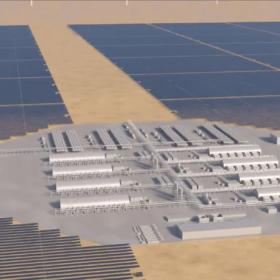Revolutionary Hydrogen Production System Unveiled in Western Australia
Key Ideas
- InterContinental Energy introduced the P2(H2)Node™ hydrogen production system in Perth, aiming to standardize and reduce costs for giga-scale production in multiple industries.
- The system integrates electrolysis within renewable energy fields to enhance efficiency and enable hydrogen storage in pipelines, facilitating large-scale adoption.
- The Western Green Energy Hub (WGEH) in Western Australia, powered by the P2(H2)Node architecture, is set to be the world's largest green hydrogen hub, supported by Australian government incentives to drive down production costs.
- ICE's portfolio also includes the Australian Renewable Energy Hub (AREH) and Green Energy Oman (GEO), showcasing commitment to large-scale green energy projects worldwide.
Western Australia's InterContinental Energy has revealed its innovative P2(H2)Node™ hydrogen production system designed to revolutionize giga-scale hydrogen production. The system, engineered in Perth, emphasizes standardization and cost reduction by integrating electrolysis within renewable energy fields. This advancement aims to accelerate the adoption of green hydrogen in various sectors like iron production, fertilizer manufacturing, power generation, and transportation fuels.
The P2(H2)Node architecture, developed by ICE, minimizes electrical losses by directly converting renewable energy into hydrogen molecules, allowing efficient storage within pipelines. Richard Colwill, ICE's Head of Engineering and Innovation, highlighted the system's focus on maximizing the proximity between renewable energy sources and hydrogen production to optimize efficiency.
ICE's CEO, Alex Tancock, emphasized the breakthrough nature of this technology in clean hydrogen production, making green hydrogen cost-competitive on a large scale. The P2(H2)Node is central to the Western Green Energy Hub (WGEH), situated in Western Australia, which is poised to become the world's largest green hydrogen hub with a massive 70 GW renewable energy capacity.
Supported by Australian government incentives, the WGEH is projected to significantly reduce green ammonia production costs, further driving the adoption of sustainable practices. ICE's commitment extends to other ambitious projects like the Australian Renewable Energy Hub and Green Energy Oman, emphasizing the global scope of their efforts in advancing large-scale green energy initiatives.
Topics
Middle East
Renewable Energy
Infrastructure
Innovation
Green Technology
Industrial Applications
Carbon Reduction
Economic Development
Energy Sector
Latest News
